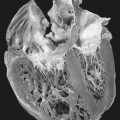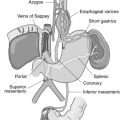61. Nephrotic Syndrome
Definition
Nephrotic syndrome is a clinical condition or group of disorders that involves defective kidney glomeruli with massive proteinuria, lipiduria with edema, hypoalbuminemia, and hyperlipidemia. It is classified as either primary nephrotic syndrome (PNS), formerly termed idiopathic nephrotic syndrome, or secondary nephrotic syndrome.
Incidence
The incidence of nephrotic syndrome for patients younger than 16 years of age is 2:100,000 to 5:100,000. For the total population, the incidence is 15.5:100,000.
Etiology
For nephrotic syndrome, a glomerular cause is generally accepted. The specific initiating event or root cause producing the massive proteinuria is still undetermined, although an immune pathology is strongly suspected. The permeability of the glomerular basement membrane is altered and the capillary transport of albumin, an anionically charged molecule, is increased by a deficiency of sialic acid from the basement membrane.
Signs and Symptoms
• Abdominal discomfort
• Albuminuria
• Anasarca
• Anorexia
• Ascites
• Azotemia
• Diarrhea
• Fatigue
• Fever
• Hematuria
• Hyperlipidemia
• Hypoalbuminemia
• Hypoproteinemia
• Hypotension
• Irritability
• Lipiduria
• Massive proteinuria
• Pallor
• Pitting edema
• Tachypnea
 |
| Nephrotic Syndrome. Severe scrotal edema in a 6-year-old with nephrotic syndrome. |
Medical Management
The agent of choice to treat nephrotic syndrome is a glucocorticoid, typically prednisone or prednisolone. High-dose therapy is employed if no contraindications to that therapy are present. The initial regimen is continued for 4 to 8 weeks. Maintenance with prednisone or prednisolone is recommended for the next 6 months on an alternating-day schedule and is tapered downward to discontinuation over the course of those 6 months.
Patients with nephrotic syndrome are at higher risk for opportunistic infection. Treatment with the glucocorticoid(s) produces immune system modulation and contributes significantly to this increased vulnerability. Any time the patient with nephrotic syndrome is febrile or demonstrates signs and symptoms of infection, close observation is warranted until the infectious organism is determined. Once the organism is identified, aggressive treatment must be initiated.
Pitting edema is treated, especially when it is symptomatic. Loop diuretics are effective but must be administered with caution. Diuresis can exacerbate plasma volume concentration that may already be present, resulting in intense hypovolemia and possibly hypovolemic shock. If the edema is of such magnitude to require diuretic therapy, an infusion of salt-poor albumin should be administered simultaneously.
Hypertension should be treated when it is demonstrated, especially if it is persistent. Occasionally, hypertension responds to diuretic therapy. The preferred treatment consists of administration of an angiotensin-converting enzyme inhibitor (ACEI) or with an angiotensin II–receptor antagonist (A2RA). Short-term treatment may be effectively accomplished using a calcium channel–blocking medication; however, hypertension with significantly persistent proteinuria is best treated with either an ACEI or an A2RA.
An integral part of the treatment regimen for the patient with nephrotic syndrome is teaching the patient to monitor urinary protein/albumin at home. The easiest, simplest, and least expensive method is generally sufficient. Urine dipsticks are typically used, but turbidity tests such as sulfosalicylic acid may be used. The patient is strongly encouraged to initiate and maintain a journal recording the results of each at-home test, which is usually done every morning. This follow-up method is particularly important once the patient’s urine has become protein free. Detection of urinary protein may signify recurrence of the disease well before the development of edema and allows for initiation of treatment measures much sooner.
Complications
• Acute renal failure
• Cataracts
• Chronic renal failure
• End-stage renal disease
• Glomerular lesion
• Growth arrest
• Hirsutism
• Hyperglycemia
• Hyperlipidemia
• Hypoproteinemia
• Mild psychoses
• Moonface
• Nephrolithiasis
• Obesity
• Osteopenia
• Osteoporosis
• Persistent hypertension
• Thromboembolism
• Toxic effects of individual drugs (i.e., antihypertensives, immunosuppressants, cyclophosphamide, chlorambucil, cyclosporine)
• Tubulointerstitial nephritis
Anesthesia Implications
The anesthetist must be mindful of aseptic technique when interacting with the patient with nephrotic syndrome. The patient is immunomodulated by virtue of the administration of glucocorticosteroids for treatment of the syndrome, and so is at higher risk for opportunistic infection. The “simple” acts of obtaining intravenous access and endotracheal intubation should be accomplished using strict aseptic technique. Prophylactic antibiotic coverage with a broad-spectrum agent may be prudent.
The patient’s fluid and electrolyte status should be assessed preoperatively. Attention should be paid to the concentration of serum proteins as well. Hypoproteinemia can significantly alter the bioavailability of highly protein-bound drugs, such as midazolam or sodium thiopental. If serum proteins are low at the time of induction, the doses of such drugs should be reduced.
The patient’s renal function should be evaluated preoperatively. For the patient with nephrotic syndrome, greater reliance should be placed on the serum indicators, such as blood urea nitrogen and serum creatinine. The anesthetist is cautioned to be somewhat skeptical about urine output, particularly if the patient is receiving diuretic therapy.
The patient may still be receiving the maintenance dose of glucocorticosteroids or may have recently discontinued steroid therapy. In either event, a stress dose of a steroid is an appropriate measure.







